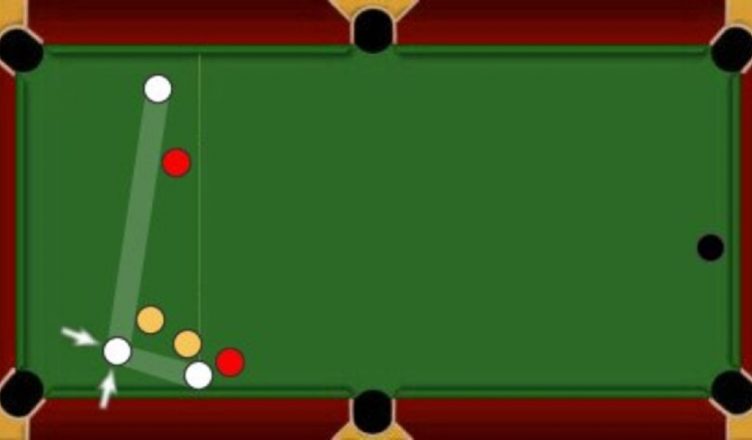If you want to improve your pool skills, you must practice… but only in the proper manner. A lot of practice is required to become proficient in the pool. Just like any of the other best bar games, this one is no exception.
However, the majority of beginning pool players go about their pool practice in the wrong way.
The fundamentals of the pool are generally skipped over by novice pool players in favor of more complex ideas like the combo and draw shots, runout patterns, powerful breaks, cue ball spin techniques, and other advanced concepts.
Please do not misunderstand me. You must practice technical shots and strategy in order to get to the next level as a pool player.
However, for the rest of us, getting great at pool begins with constant practice of fundamental pool skills and mechanics, which we can learn from books or online.
By understanding the fundamentals, you will significantly improve your playing ability.
No matter the billiards game you are playing, whether it is 9-ball or 8-ball, a fun game-like Cutthroat, or a technical game like Straight Pool, this is true for every one of them.
Read More: How To Play Game Ride The Bus
Mastering The Fundamentals Is Required For Significant Improvement.
Practice is essential, and it should be done in the proper manner. Whether you have ambitions to become the second coming of Paul Newman as portrayed in The Color of Money or simply want to hone your snooker skills and beat your friends at the pub, you must practice in the proper manner.
The reality is that many beginning pool players approach the game incorrectly. A much too often occurrence is that they skip through the fundamentals and immediately go into advanced ideas such as cue ball spin methods and draw strokes.
It would be foolish to attempt to drive a classic Ferrari without first learning how to operate a clutch and shift gears; similarly, it would be foolish to attempt difficult rail combos without first learning fundamental pool mechanics and techniques.
Certain technical tactics and thinking will need to be practiced in order to get to the next level of billiards playing ability.
But for the majority of us, being a better pool player begins with a steady regimen of practice in basic, fundamental pool mechanics, methods, and shot selection.
It doesn’t matter where you want to take your pool game; understanding the fundamentals will make you a significantly stronger player.
No matter what type of pool game you’re playing, whether it’s 8-Ball, 9-Ball, or any other, here are some fundamental strategies and drills to rapidly enhance your pool skills.
Read More: How To Rack Pool Balls Full Detail
Get A Good Grip On Things.
Pool and billiard novices frequently commit the error of grasping their cue with an excessively tight grip.
While it is natural to believe that tightening your grip on the cue will give you greater precision and control over your shot, this is not the correct technique.
The first thing to note is that gripping the cue too tightly during shooting might cause the butt of the cue to lift, which makes it much more difficult to produce a straight and accurate shot.
An excessively tight grip might also increase your chances of hitting the cue ball too low, which can cause it to jump right off the table when you hit it.
Instead of holding the cue with a death grip, loosen your grip a little to allow you to pick up the cue from the table. As you rest it on your fingers, gently hold it in your hands.
When you’re practicing, make sure to devote some time to improve your grip as well. Keep your grip light and soft while shooting with complete control to ensure that you have the best possible control.
Continue to practice until gripping the cue both lightly and in control becomes second nature to you once you’ve achieved the desired balance.
Develop Your Shooting Stance Through Practicing.
Besides gripping the golf club, your stance is one of the most important and fundamental parts of your shot to master through repetition.
In general, the distance between your front foot and rear foot should be shoulder width. In addition, your back foot should be at a 45-degree angle, with your front foot pointed straight ahead of you. Shooting in this stance should be practiced. You should be at ease and confident in your abilities.
A large number of pool players apply an excessive amount of weight on either their front or back foot. Your weight should be evenly distributed and equally balanced between both of your feet.
Be sure to keep your head stable, low, and the level above the cue when you are bending forward to take a shot. Aside from that, you should shift some of your weight to your bridge hand in order to form a tripod with both of your legs.
Despite the fact that this is the ideal stance and body position, it is critical that it is comfortable.
Once you get the appropriate stance down and it feels low, balanced, and comfortable, move around the pool table and practice keeping the stance the same as you shoot from different positions while moving around the pool table.
Read More: How TO Play Dice Games
Pendulum-like Motions Are Encouraged.
As a result of your light and loose cue grip, you are now in a position to go onto the following step: improving your pendulum swing. Keeping your body in alignment with your aiming line is quite critical when shooting, as you will see in the video.
However, if your shooting arm is not completely still, it is quite difficult to maintain alignment. The upper arm of many beginner players moves far too much when they are shooting, which is dangerous.
Thinking of your upper and lower shooting arms like pendulums is the most effective technique to tackle this problem.
It is important that your upper arm remains even and still throughout the entire process.
If you love reading this article, then you will more articles on my site, FarhanTech

